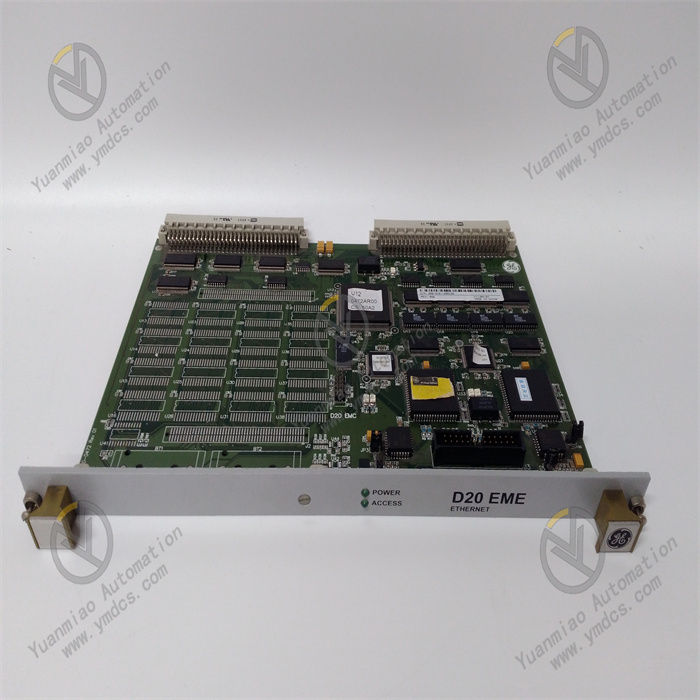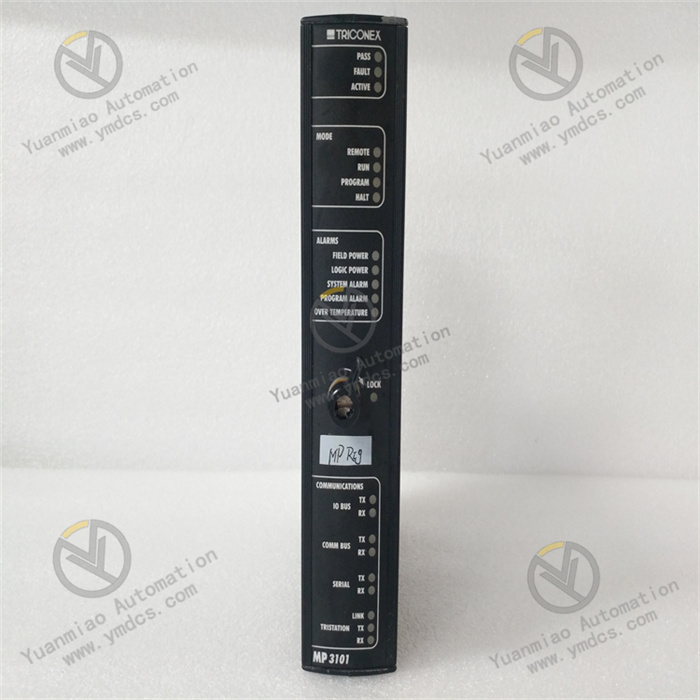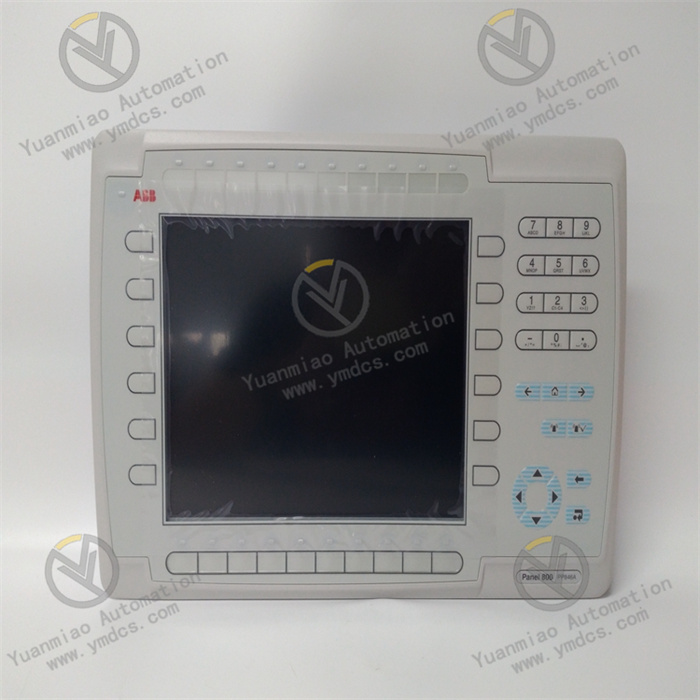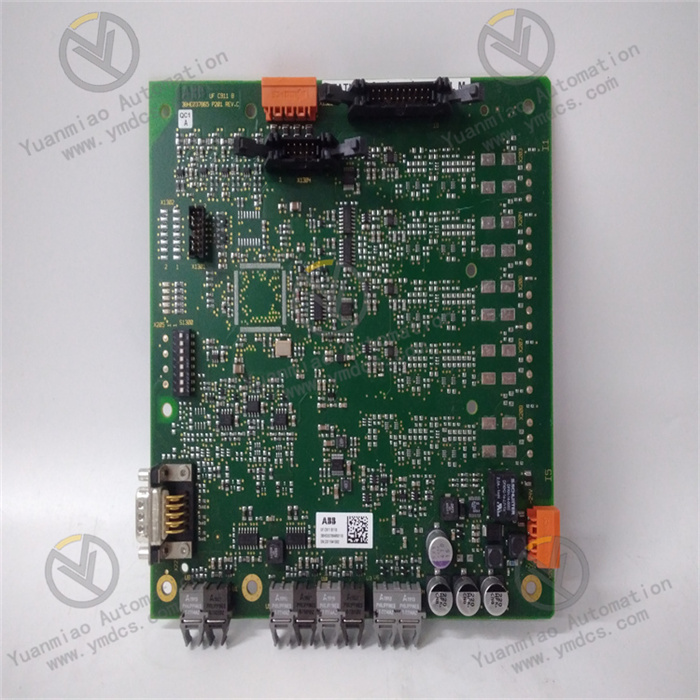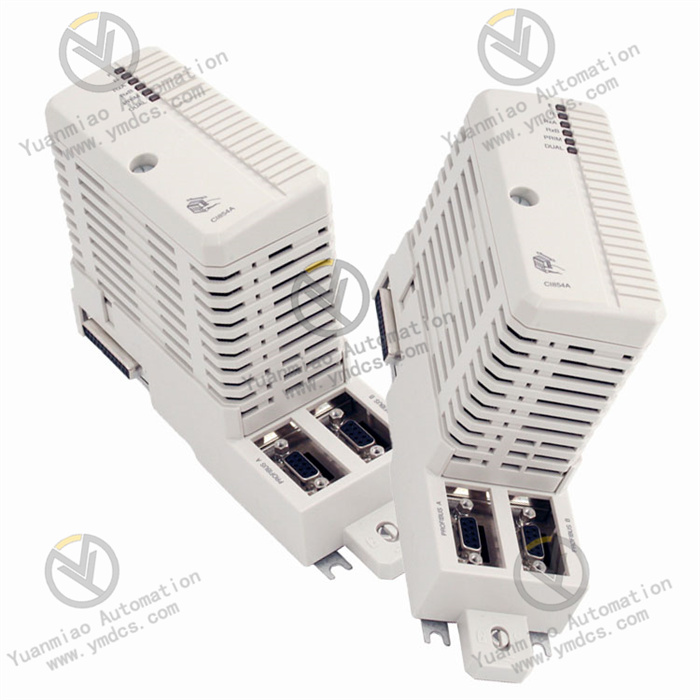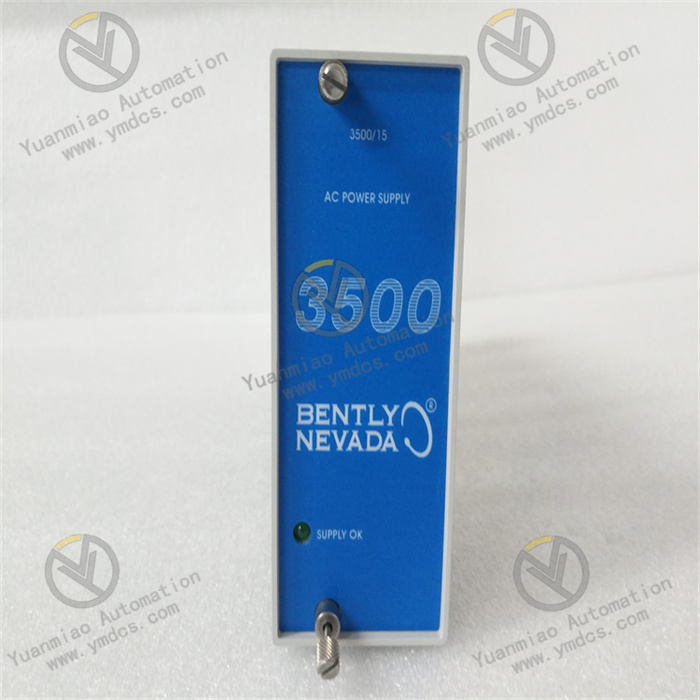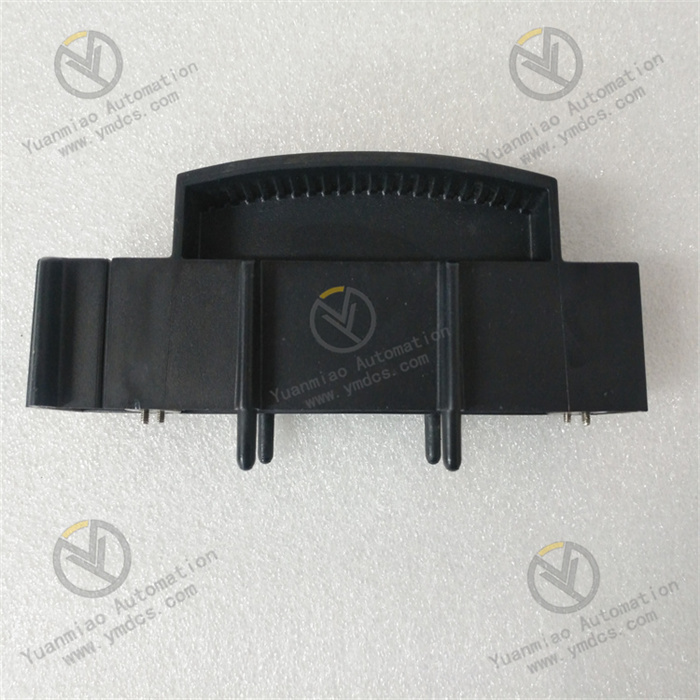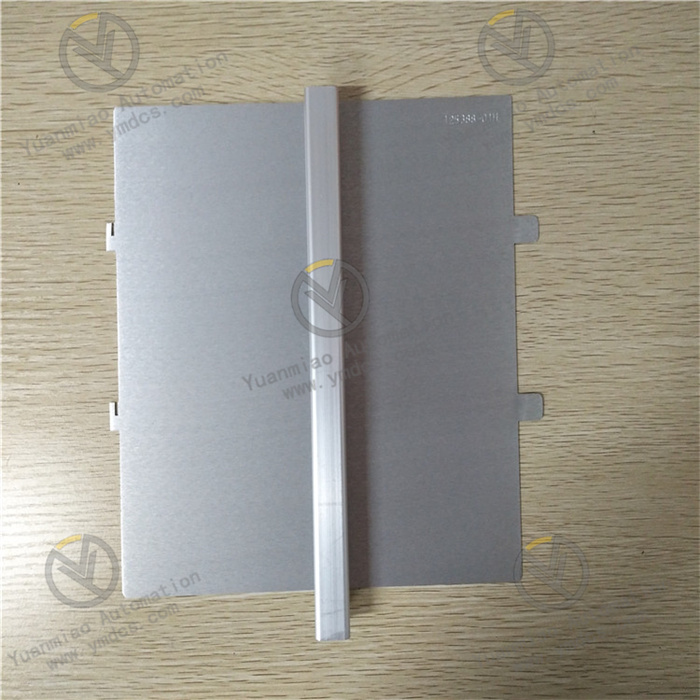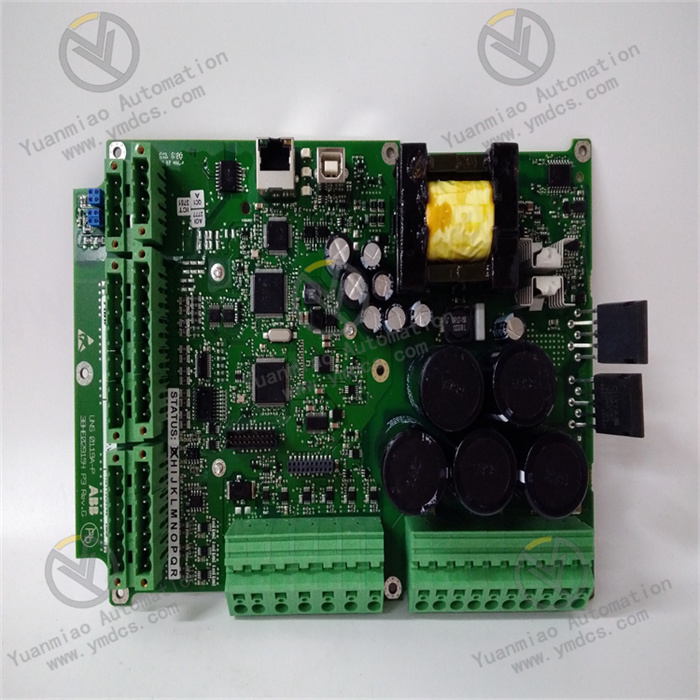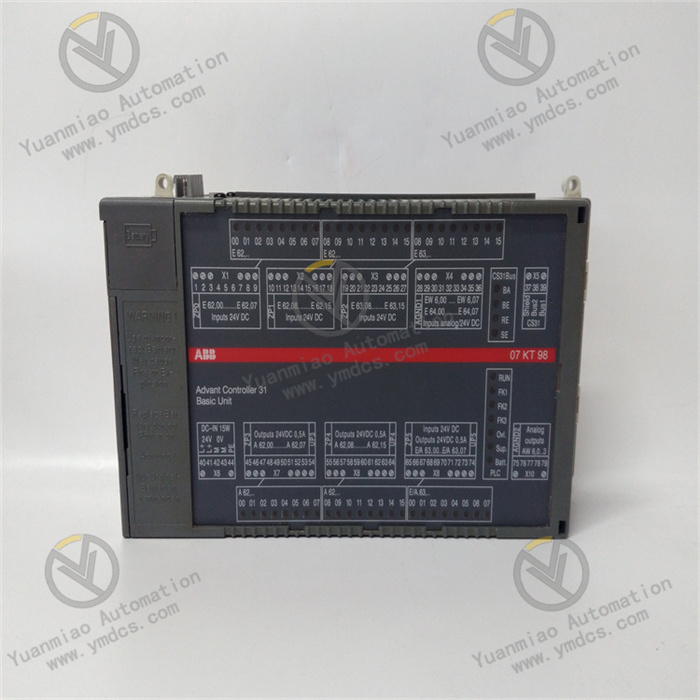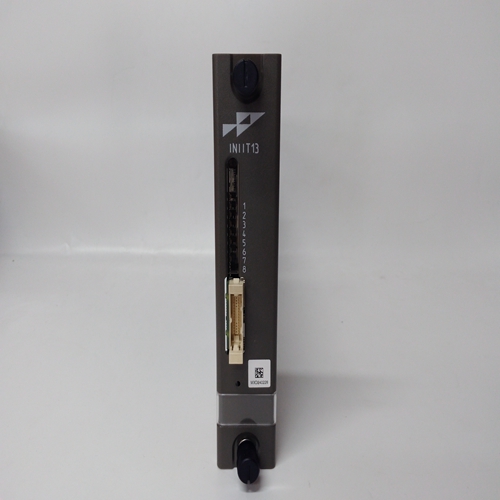Description
The GE WES5302-150 is a processor board manufactured by General Electric and belongs to the simplex servo I/O terminal board of the Mark VI series in the GE Speedtronic control system. Functional Features: It has two servo outputs, I/O for six LVDT (Linear Variable Differential Transformer) position sensors, and two active pulse rate inputs for flow monitoring. In order to identify the board of VSVO for system diagnosis, the connectors JR1 and J5 are connected to the signals from the onboard ID chip. This board is only available in simplex mode, and the onboard functions and high-frequency decoupling to the ground are the same as those on the TSVO. Installation Method: After placing the DSVO board into the plastic bracket, install it on the DIN rail. It can be stacked vertically on the DIN rail to save cabinet space. Configuration Method: The servo valve coil resistance ranging from 22W to 1,000W and the required coil current are selected on the DSVOH1B through the jumpers JP1 and JP2. For example, the jumper 120B can provide a coil current of approximately 120mA. Terminal Type: High-density Euro-Block type terminal blocks are used and connected to the circuit board through six screws for the ground connection (SCOM). Depending on the version, the Euro-Block type terminal blocks installed on the terminal board have 42 or 36 terminals (DSVOH1B, H2B), and twisted-pair cables with #18AWG shielding are often used.
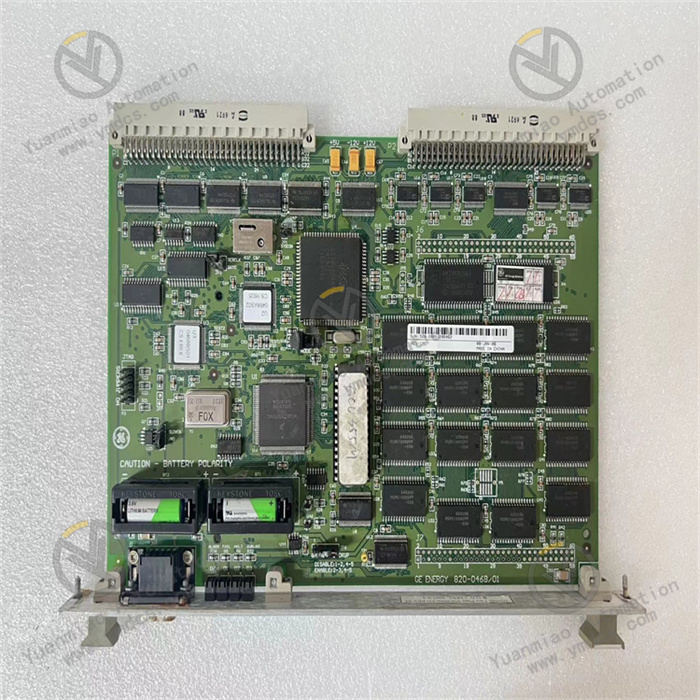
Installation and Maintenance Guide for GE WES5302-150 Processor Board: Installation Guide Preparation Work: Ensure that the installers possess relevant electrical knowledge and skills and are familiar with safety operation procedures. Prepare necessary tools, such as anti-static wristbands, screwdrivers, etc. At the same time, ensure that the installation environment is clean, tidy, and free of dust, and that the temperature and humidity meet the requirements of the equipment. Its operating temperature range is generally from -25°C to +70°C, and the humidity range is from 0% to 95% (without condensation). Power-off Operation: Before installing the processor board, be sure to cut off the power supply of the relevant equipment and ensure that the power plug has been pulled out of the socket to avoid the risk of electric shock. Anti-static Measures: Wear an anti-static wristband and ground it to prevent static electricity from damaging the processor board. If there is no anti-static wristband, you can also touch a grounded metal object before touching the processor board to release the static electricity on your body. Selection of Installation Location: Select a suitable installation location to ensure that the processor board can be firmly installed in the equipment and that there is enough space around it for heat dissipation and cable connection. Cable Connection: According to the instruction manual of the processor board, correctly connect various cables, such as power cables, data cables, communication cables, etc. Ensure that the cables are firmly connected to avoid looseness or poor contact. When connecting the power cable, pay attention to whether the voltage meets the requirements of the processor board. Its input voltage range is generally 12 - 24VDC. Fixing the Processor Board: Use appropriate screws or clips to fix the processor board in the installation position to ensure that it will not shake or shift. Installation Inspection: Before powering on, carefully check whether the installation of the processor board is correct, whether the cable connections are firm, whether the screws are tightened, etc. Only after confirming that there are no errors can the power be turned on.
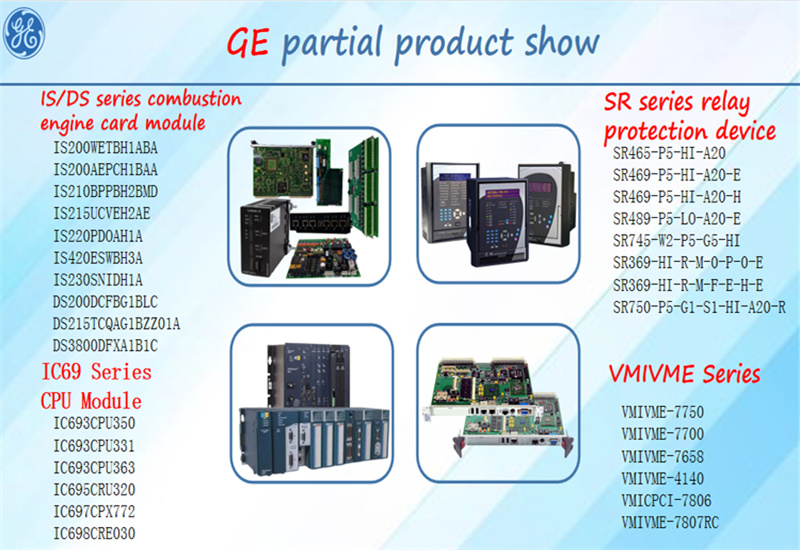
Maintenance Guide
Regular Inspection: Regularly check the operating status of the processor board, including checking whether the indicator lights are normally on, whether the temperature is too high, and whether there is any abnormal noise, etc. If an abnormal indicator light or other abnormal situations are found, timely troubleshooting and handling should be carried out.
Cleaning and Maintenance: Regularly clean the dust on the processor board. You can use a clean soft cloth or compressed air for cleaning. Avoid using a wet cloth or cleaning agents containing chemical substances to prevent damage to the processor board. At the same time, keep the installation environment clean to reduce the accumulation of dust.
Temperature Management: Ensure that the processor board operates within an appropriate temperature range. Avoid placing the equipment in an environment with direct sunlight or high temperatures, and keep the area around the equipment well-ventilated. If the temperature of the processor board is found to be too high, check whether the cooling fan is operating normally or whether there are other heat dissipation problems.
Power Management: Ensure a stable and reliable power supply and avoid voltage fluctuations or sudden power outages. A voltage regulator or an uninterruptible power supply (UPS) can be used to protect the processor board from power problems. At the same time, regularly check whether the power lines are loose or damaged.
Software Update: Update the driver programs and related software of the processor board in a timely manner to ensure its compatibility with other devices and performance optimization. You can obtain the latest software version from the official GE website or other reliable channels and update it according to the instructions.
Fault Troubleshooting: If the processor board malfunctions, first check the error code or the status of the indicator lights to determine the approximate scope of the fault. Then, you can refer to the instruction manual of the processor board or contact GE's technical support personnel for further fault troubleshooting and repair. When troubleshooting faults, pay attention to following the safety operation procedures to avoid more serious problems caused by misoperation.
Spare Parts Management: To reduce equipment downtime, it is recommended to prepare some commonly used spare parts, such as processor boards, cables, power modules, etc. When the processor board malfunctions, the spare parts can be replaced in a timely manner to restore the normal operation of the equipment. At the same time, regularly check the status of the spare parts to ensure that they are in good condition and available for use.
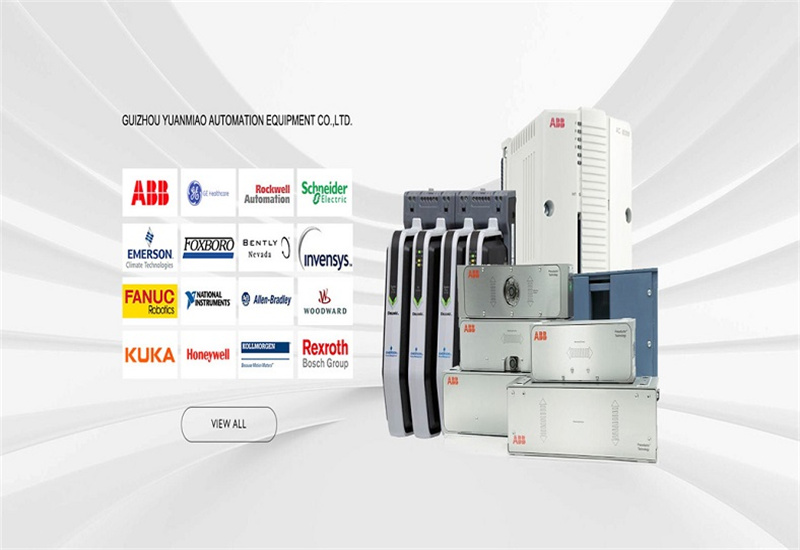
Main brands include: ABB, Bailey, GE, FOXBORO, Invensys TRICONEX, Bentley BENTLY, A-B Rockwell, EMERSON EMERSON, B&R, MOTOROLA, FUANC, REXROTH, KUKA, HONEYWELL, NI, DEIF, Yokogawa, WOODWARD, Ryan, SCHNEIDER SCHNEIDER, Yaskawa, MOOG, EPRO, PROSOFT and other major brands
【 Disclaimer 】 We sell new products and discontinued products, independent channels to buy such special products. Guizhou Yuanmiao Automation Equipment Co., Ltd. is not an authorized distributor, dealer or representative of the products featured on this website. All product names/product images, trademarks, brands and microlabels used on this Website are the property of their respective owners. Descriptions, depictions or sales of products with such names/images, trademarks, brands and logos are for identification purposes only and do not imply any association or authorization with any rights holder. This article is from the official website of Guizhou Yuanmiao Automation Equipment Co., LTD. Please attach this link:http://www.ymdcs.com/GE/


